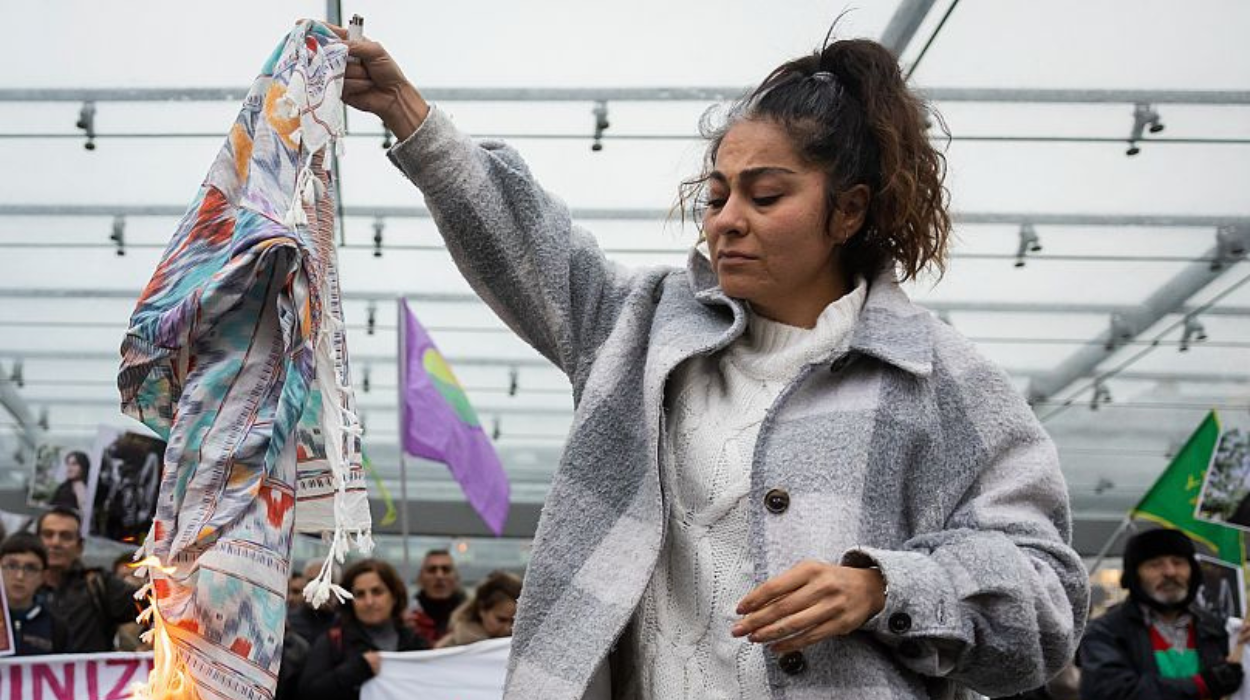
Modesty Blazes: Inside the Multi-Million Euro Industry Selling ‘Conservative’ Clothing
The term “modest fashion” refers to a growing clothing trend that focuses on stylish, yet non-revealing garments. This industry, which includes items such as burkinis and knee-length skirts, has gained significant momentum in recent years, attracting a wide range of consumers, particularly from religious communities. The modest fashion industry has grown into a multi-million euro sector, sparking intense debates and responses about the idea of modesty and how it intersects with modern fashion.
Read Also: Chanel swaps pomp and fanfare for flip-flops and ponchos
Modesty Fashion’s Evolution
Modest fashion began emerging around 2010 and gained widespread popularity by 2015. Fast forward to 2024, and “modest weeks” are held in various cities worldwide, with a booming influencer scene supporting the trend in the background. The rise of TikTok also played a major role in popularizing the concept, with the term “sage” (meaning reserved, quiet, or modest) becoming viral through videos on the platform, even being named Word of the Year by Dictionary.com.
At its core, modest fashion involves dressing elegantly in clothes that do not reveal too much. However, critics argue that the term itself is problematic, with some people rejecting the idea that women should adhere to a specific dress code.
Religious Influence on Modesty Fashion
Modest fashion today is deeply tied to religion and primarily targets women. Muslim women are the largest consumers of modest fashion, but other religious buyers, as well as women looking for professional outfits, are also key demographics. Many of the most popular brands and influencers in the industry are based in the Middle East, where several countries enforce conservative dress codes as part of their cultural norms.
A report from the Global Islamic Economy estimated that Muslim consumers spent €287 billion on the modest fashion industry in 2024, with the market projected to grow to €364.5 billion in the coming year.
The Rise of Modest Fashion Weeks and Influencers
Modest fashion has gained significant traction in Europe and beyond, especially after a shift in mindset during the mid-2010s. “After 9/11, the fashion industry was hesitant to associate itself with Muslim women. But from 2015, this started to change,” said Reina Lewis, a professor of cultural studies at the London College of Fashion.
High Street brands were quick to respond to the demand. In 2015, British-Japanese Muslim designer Hana Tajima collaborated with Uniqlo to launch a collection in Malaysia, Singapore, and Indonesia. This was the first time that hijabs were sold by the company in a collection styled by Malaysian pop star Yuna.
Halima Aden’s Historic Vogue Cover
In 2018, model Halima Aden became the first woman to wear a hijab on the cover of British Vogue. Under the editorial direction of Edward Enninful, who introduced a new wave of fashion professionals when he was appointed in 2017, this cover was seen as a historic moment for the Western fashion industry. However, shortly after, Aden announced a three-year career break, citing difficulty reconciling her faith with her work in the fashion industry.
The Modest Fashion Cycle
As fashion trends move in cycles, the pandemic pushed the industry in a different direction. “Body-hugging dresses, cut-out styles, and the like were back,” Lewis said. Despite this, modest fashion remains popular, with many women from religious backgrounds turning to entrepreneurship to fill the gap in the market.
A Growing Niche Market
Many modest fashion entrepreneurs have found success in catering to a market that was once overlooked. Women, particularly those from religious communities, have sought out styles that allow them to dress modestly without sacrificing fashion. “They started their modest fashion lines and found that they appealed not only to consumers from other religious communities but also to non-religious buyers due to the convenience of online shopping,” Lewis explained.
In 2016, Turkish fashion consultant Ozlem Sahin Ertas founded the Think Fashion Group, which has heavily invested in the modest fashion industry. Ertas, who comes from a Muslim family, said, “My mom doesn’t wear a hijab, but she dresses modestly. She had to go to a tailor to have her clothes made, and I couldn’t bear to see how much she spent getting alterations.”
Modest Fashion Week: A New Platform for Talent
Ertas’s experience led to the creation of Modest Fashion Week, aiming to create a platform for industry professionals to exchange ideas. “Paris Fashion Week is about designers competing for slots, but our Modest Fashion Week is about promoting new talent,” Ertas said. This year’s event will be held in Riyadh, Saudi Arabia.
Marketing and Criticism of Modest Fashion
Despite its growth, the term “modest fashion” has been criticized as a marketing strategy, often used to rebrand existing clothing lines. In 2015, DKNY launched an Eid collection specifically marketed in the Gulf, which became a viral success. However, other brands, such as Banana Republic, faced backlash for attempting to introduce modest fashion with models wearing scarves alongside loose-fitting clothes, which critics argued was inconsistent with the concept of modesty.
Controversies and Feminist Criticism
Some Western secular women and feminist thinkers have criticized the term “modesty,” arguing that it is used politically to control women’s bodies. The death of Mahsa Amini in Iran, following her arrest by the morality police for not wearing her hijab properly, sparked protests and highlighted the oppressive nature of modesty laws in certain countries.
Feminist writer Jessica Valenti argued that all proponents of modesty are anti-feminist, stating, “If you want to push for a new generation of chaste, obedient girls making apple pies, go ahead.”
The Future of Modest Fashion
Despite the controversies, modest fashion continues to grow and evolve. The demand for stylish yet modest clothing reflects the broader desire for inclusivity in the fashion industry. As more women seek to define modesty on their own terms, the modest fashion movement is likely to remain a significant force in the global fashion landscape.
This article is originally published on: observatoiredeleurope



